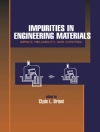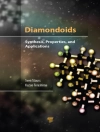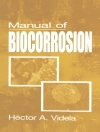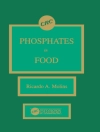The chapters presented in this book
‘Biofortification of Food Crops’ depict how agricultural technological interventions have true role in alleviating malnutrition. This book highlights the role of multidisciplinary approaches to cope up with the challenges of micronutrient malnutrition or hidden hunger which is an alarming public health issue in most parts of the world including India. In this endeavour, different biofortification approaches such as agronomic (or ferti-fortification), breeding, biotechnological, physiological, microbial etc. has fulfilled their different mandates of nutrient enrichment of food crops including cereals and pulses. The contents of the book proves that biofortified plants have adequate potential to nourish nutrient depleted soils, help increase crop productivity and provide nutritional benefits to plants, humans and livestock. The content and quality of information presented in this book will definitely provide multiple novel ideas ofadvance techniques and will stimulate innovative thoughts and directions amongst researchers and policy makers in the field of biofortification. In addition, the contributions presented in the book will be a good source of background knowledge and technical know-how to educate the readers about biofortification. The authors hope that the book entitled “
Biofortification of Food Crops” would provide a suitable platform in our collective efforts for an appropriate dialogue among the scientists, researchers, entrepreneurs, policy makers and farmers in reducing the budding issues of malnutrition through novel approaches and means.
Mục lục
Part 1. Biofortification for Health and Nutrition.- 1. Biofortification: Introduction, Approaches, Limitations and Challenges(Ummed Singh).- 2. Global Poverty, Hunger and Malnutrition: A Situational Analysis(Purushottam Sharma).- 3. Zinc in Crops and Human Health(Soumitra Das).- 4. Food Legumes for Nutritional Quality and Health Benefits(N.P. Singh).- 5. Biofortification of Food Legumes & Bioavailability of Nutrients(Jagdish Singh).- 6. Nutritional Benefits of Winter Pulses with Special Emphasis on Peas and Rajmash(A.K. Parihar).- 7. Nutritional Benefits of Pigeonpea(I. P. Singh).- Part 2. Biofortification through Biotechnology and Breeding tools.- 8. Enriching Nutrient Density in Staple Crops Using Modern ‘-Omics’ Tools(Abhishek Bohra).- 9. Transgenic Strategies Towards Nutritional Enrichment of Crops(A. Das).- 10. Genomics Enabled Breeding for Enhancing Micronutrients in Crops(K.R. Soren).- 11. Zinc Transporter: Mechanism for Improving Zn Availability(Lalit Kumar).- 12. Biofortification through Breeding Interventions in Lentil(Jitendra Kumar).- Part 3. Biofortification with Improved Agronomy.- 13. Soil Factors Associated with Micronutrient Acquisition in Crops – Biofortification Perspective(Anil Kumar).- 14. Nutrient Mining: Addressing the Challenges to Soil Resources and Food Security(Kaushik Majumdar).- 15. Improving Protein Density in Food Legumes through Agronomic Interventions(C. S. Praharaj).- 16. Micronutrient Deficiencies in Humans and Animals: Strategies for their Improvement(Anshu Rahal).- 17. Micronutrient Fertilizers for Zinc and Iron Enrichment in Major Food Crops: A Practicable Strategy(Yashbir Singh Shivay).- 18. Soil Test Crop Response: Concepts and Components for Nutrient Use Efficiency Enhancement(S.R. Singh).- Part 4. Biofortification with Microbes.- 19. Biofortification with Microorganisms: Present Status and Future Challenges(Radha Prasanna).- 20. Plant Growth Promoting Rhizobacteria in Nutrient Management: Current Perspectives(Poonam Sharma).- 21. Role of Phytosiderophores in Acquisition of Iron and other Micronutrients in Food Legumes(Lalit Kumar).- 22. Selenium Bioavailability through Microbes(Santhappan Paulraj).- 23. Moving Micronutrients from the Soil to Seeds – Understanding Physiological Processes(P.S. Basu).- Part 5. Biofortification for Value Addition and Novelty.- 24. Anti-nutrients Restraining Biofortification(R.P. Srivastava).- 25. Nutritional Enhancers/Promoters in Biofortification(Nand Lal Meena).- 26. High Beta Carotene Rice in Asia: Techniques and Implications(S. K. Dash).- 27. Biofortified Wheat for Mitigating Malnutrition(Hari Ram).- 28. Specialty Corn for Nutritional Security and Dietary Diversification(C.M. Parihar).- 29. Biofortification of Pearl Millet for Nutritional Enrichment(Meenakshi Chaudhary).- 30. Biofortification for Nutrient Rich Millets(A.C. Shivran).- 31. Pre- and Post Harvest Management of Physical and Nutritional
Quality of Pulses(Aditya Pratap).- 32. Enriched Potato for Mitigating Hidden Hunger(Rajiv).- Part 6. Biofortification with Futuristic Challenges and Approaches.- 33. Nutri-Farms for Mitigating Malnutrition in India(Purushottam).- 34. Biofortification: Pathway Ahead and Future Challenges(S.S. Singh).
Giới thiệu về tác giả
Dr Ummed Singh is a Senior Scientist at ICAR-Indian Institute of Pulses Research, Kanpur, India. Earlier Dr Singh served as Assistant Professor at SKUAST of Kashmir, Srinagar, India. He did his Post-Doctorate (2009-11) at the Nanjing Agricultural University, Nanjing, P.R. China, where he worked on ‘
Biofortification of Wheat’. He is currently responsible for developing efficient pulse based cropping systems, biofortified pulses and next generation fertilizers. His research findings have been documented in over 125 referred publications. He also serves as Editor, reviewer of national and international journals and holding life membership of 11 professional societies. Dr Singh has visited to China, Thailand, Malaysia, Hong Kong, United Arab Emirates etc. Dr Singh has also been awarded IMPHOS-FAI Award-2013, Best Poster-2014, SHRIRAM PURUSKAR 2013-14 and Innovative Scientist of the Year-2014.
Dr C S Praharaj is Principal Scientist at ICAR- IIPR Kanpur. He has alsoworked at CPRI, Shimla, CSWCRTI, Dehradun, CICR, Nagpur. His research interest is primarily on ‘enhancing water productivity per drop of water use’ through Resource conservation and Precision agriculture technologies. He has published 76 Research Papers, 2 books, 16 Book Chapters, 06 Technical Bulletins, 64 Papers in Proceedings/ symposium/ seminar, 51 Popular Articles and 24 compendiums/reports besides editor in three journals. He has visited the countries like, Egypt, Bangladesh and Nepal. He has also been awarded appreciation from Govt. of Odisha and Shriram Puruskar 2013-14.
Dr S S Singh is Principal Scientist & Head, Division of Crop Production, ICAR-IIPR, Kanpur. Earlier, he has been Head, Division of Crop Research at ICAR-RCER Patna, and Assistant Professor, Rajendra Agriculture University, Pusa, Bihar. His research interest is primarily in conservation agriculture, Integrated Farming Systems and Climate resilient agriculture. He has published 88 Research Papers, 3 books, 15 Book Chapters, 12 Technical Bulletins, 105 Papers in Proceedings/ symposium/ seminar, 45 Popular Articles and 42 Extension Folders. He has visited USA, UK, Australia, Mexico, Thailand, Philippines, Bangladesh and Nepal. He is recipient of Excellent Team Research Award of ICAR, Rajeev Gandhi Maulik Lekhan Award of Ministry of Home Affairs, GOI and Fellow of Indian Society of Agronomy.
Dr Narendra Pratap Singh, is a Director, ICAR-Indian Institute of Pulses Research, Kanpur. Previously, Dr Singh was Project Coordinator (Chickpea). He did Post Doctorate from WA Biotechnology Centre, Murdoch University, Perth, Australia (2000) and Plant Biotechnology Institute, NRC, Saskatoon, Canada (2004). He has published over 150 research/conference papers. He served as Editor-in Chief, Journal of Food Legumes and Editors of more than 15 Indian and International Journals. Presently, he is also President of Indian Society of Pulses Research and Development, IIPR, Kanpur. He have been recipient of ‘Bioved Agri-Innovative Award-2015’ conferred by Bioved Research Institute, Allahabad.












